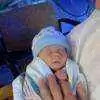-
Welcome to Celiac.com!
You have found your celiac tribe! Join us and ask questions in our forum, share your story, and connect with others.
-
Celiac.com Sponsor (A1):
Celiac.com Sponsor (A1-M):
-
Get Celiac.com Updates:Support Our Content
Lasagna With Other Noodles?
-
Get Celiac.com Updates:Support Celiac.com:
-
Celiac.com Sponsor (A17):
Celiac.com Sponsor (A17):
Celiac.com Sponsors (A17-M):
-
Recent Activity
-
- chrisinpa commented on Scott Adams's article in Additional Concerns3
Going Low-Gluten May Harm Good Gut Bacteria, Researchers Warn
It's like a double edged sword.......we do one thing to improve a problem and cause another problem. I'd like to think the ultimate cure might be something that would train or modify the body to prevent the damage that gluten causes. -
- Flash1970 replied to Ginger38's topic in Related Issues & Disorders7
Shingles - Could It Be Related to Gluten/ Celiac
You might try Heallix. It's a silver solution with fulvic acid. I just put the solution on with a cotton ball. It seemed to stop the nerve pain. Again, not in your eyes or ears. Go to heallix.com to read more about it and decide for yourself Also, I do think nerve and celiac combined have a lot to do with your susceptibility to shingles breaking out... -
- trents replied to Roses8721's topic in Celiac Disease Pre-Diagnosis, Testing & Symptoms10
GI DX celiac despite neg serology and no biopsy
Celiac disease requires both genetic potential and a triggering stress event to activate the genes. Otherwise it remains dormant and only a potential problem. So having the genetic potential is not deterministic for celiac disease. Many more people have the genes than actually develop the disease. But if you don't have the genes, the symptoms are likely being... -
- Roses8721 replied to Roses8721's topic in Celiac Disease Pre-Diagnosis, Testing & Symptoms10
GI DX celiac despite neg serology and no biopsy
Yes, i pulled raw ancetry data and saw i have 2/3 markers for DQ2.2 but have heard from friends in genetics that this raw data can be wildly innacurate -
- Ginger38 replied to Ginger38's topic in Related Issues & Disorders7
Shingles - Could It Be Related to Gluten/ Celiac
Thanks, I’m still dealing with the pain and tingling and itching and feeling like bugs or something crawling around on my face and scalp. It’s been a miserable experience. I saw my eye doc last week, the eye itself was okay, so they didn’t do anything. I did take a 7 day course of an antiviral. I’m hoping for a turnaround soon! My life is full of stress ...
-





Recommended Posts
Archived
This topic is now archived and is closed to further replies.